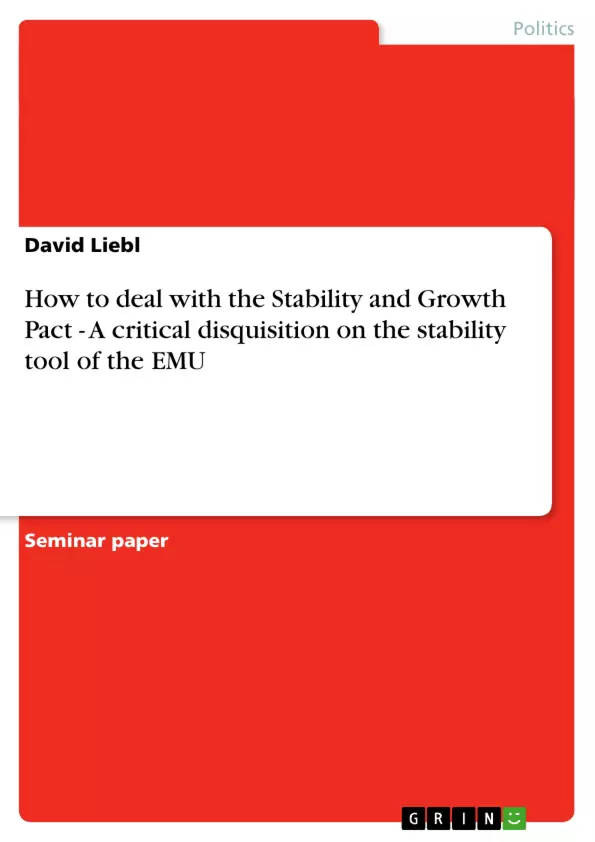Within the field of International Political Economy the case of monetary unions has become a big issue. Especially the establishment of the EMU has led to numerous academic publications. An intense political but also scientific discussion arose about the Stability and Growth Pact of the European Monetary Union.
In March 2005 the ministers of finance and economics of the European Union decided to form the Stability and Growth Pact in a more flexible way. In the future countries that are above the 3 % limit should be judged as individual cases. In the academic discussion few economists already claim this, to be the pacts death.
The paper starts by providing some basic facts about the terms of the pact and it’s application during the last years. Chapter 4 provides a short overview about the theoretical background to the field, which can be simplified as Monetarism vs. Keynesian Economics.
The main research question is, how we should deal with the pact. Should it be kept like it is today? Or are there good options to change the pact?
In chapter 5 I will point out the most important arguments for keeping the pact and for changing it. Chapter 6 finally goes into the latest academic discussion about a reform of the pact and presents different approaches in doing so.
Inhaltsverzeichnis (Table of Contents)
- Introduction.
- The terms of the SGP
- The aim of the Stability and Growth Pact.
- Basic rules of the pact.
- The pacts deployment up to the present
- Theoretical background.
- Arguments for changing the pact...
- Arguments for keeping the pacts basic rules
- Reforming the SGP
Zielsetzung und Themenschwerpunkte (Objectives and Key Themes)
This paper aims to critically examine the Stability and Growth Pact (SGP) of the European Monetary Union (EMU), focusing on the question of whether the pact should be maintained in its current form or reformed. The paper will explore the theoretical underpinnings of the SGP, analyze its implementation and effectiveness, and assess the arguments for and against its reform.
- The Stability and Growth Pact and its impact on fiscal policy in the EMU.
- The effectiveness of the pact in promoting stability and growth in the Eurozone.
- The theoretical underpinnings of the pact, particularly the debate between Monetarism and Keynesian economics.
- The arguments for and against reforming the SGP.
- Different approaches to reforming the pact.
Zusammenfassung der Kapitel (Chapter Summaries)
- Introduction: This chapter provides a brief overview of the paper's focus, highlighting the importance of the SGP in the context of the EMU and the ongoing debate surrounding its effectiveness. The chapter introduces the main research question and outlines the paper's structure.
- The terms of the SGP: This chapter delves into the core components of the SGP. It explains the pact's objective, which is to ensure budgetary discipline among EMU member states and prevent excessive debt accumulation. The chapter also details the pact's basic rules, including the 3% deficit limit and the 60% debt-to-GDP ratio.
- The pacts deployment up to the present: This chapter examines the implementation of the SGP since its inception, highlighting its effectiveness in promoting fiscal stability. It reviews the initial adoption of the pact and its subsequent application in the context of the EMU's development.
Schlüsselwörter (Keywords)
The paper focuses on the Stability and Growth Pact, European Monetary Union, fiscal policy, budgetary discipline, public debt, inflation, Monetarism, Keynesian economics, and EMU reform.
- Citation du texte
- David Liebl (Auteur), 2005, How to deal with the Stability and Growth Pact - A critical disquisition on the stability tool of the EMU, Munich, GRIN Verlag, https://www.grin.com/document/41052



